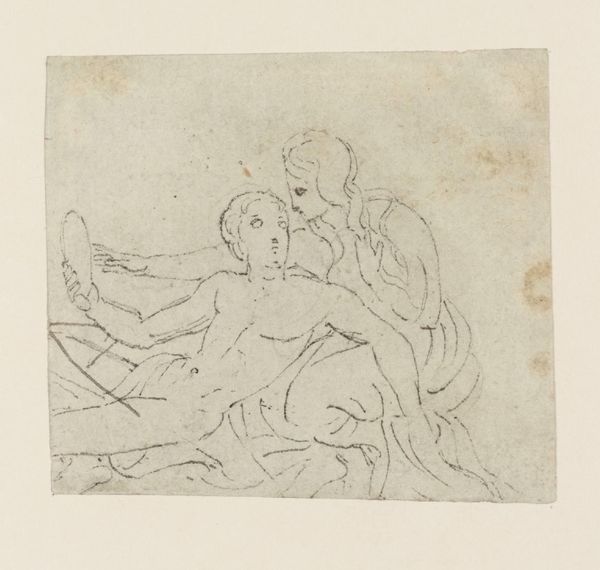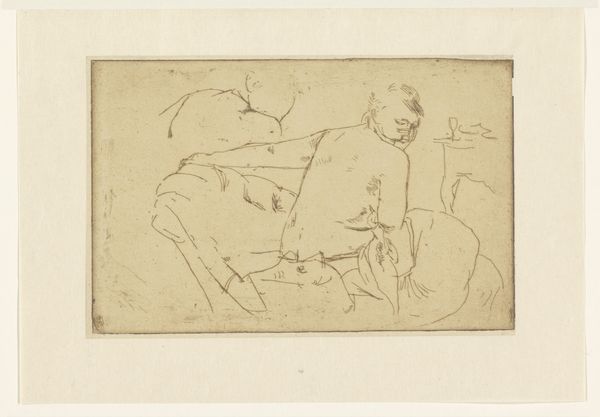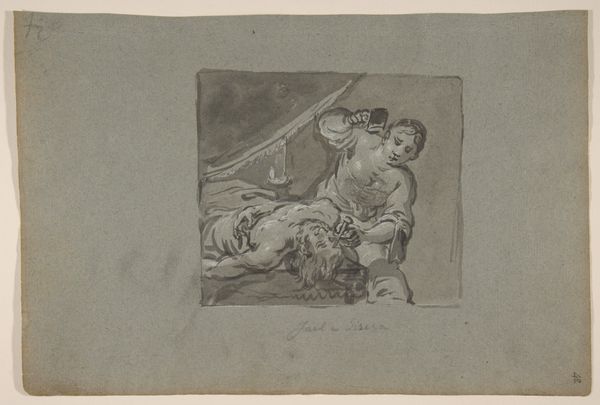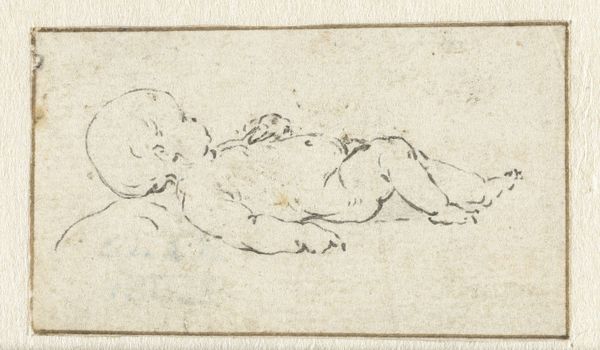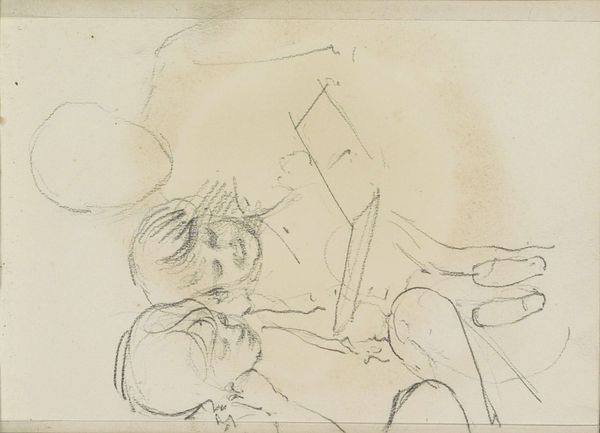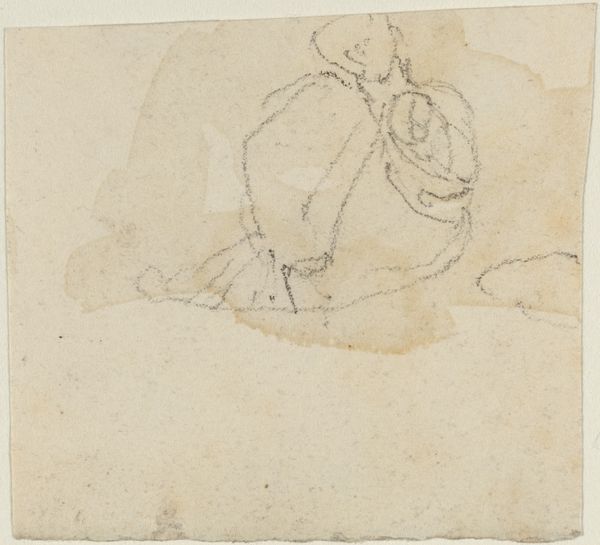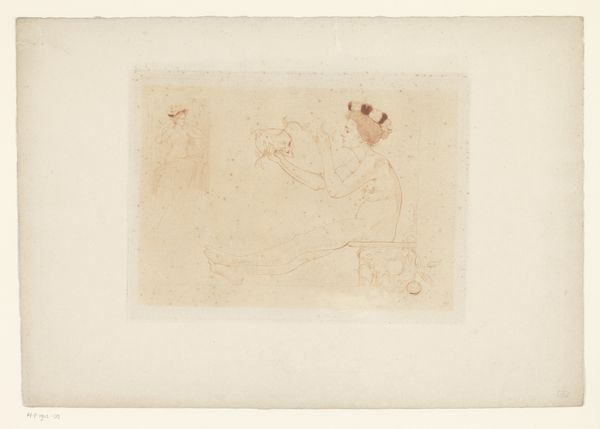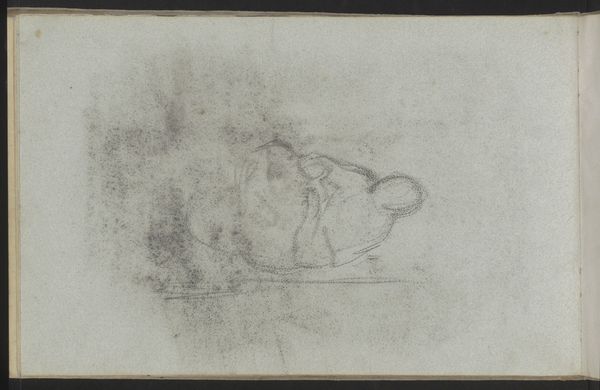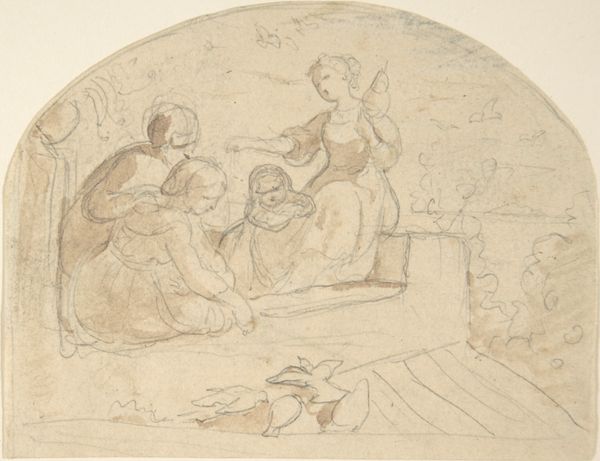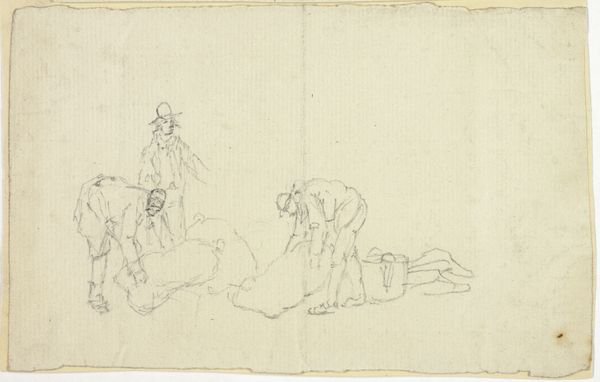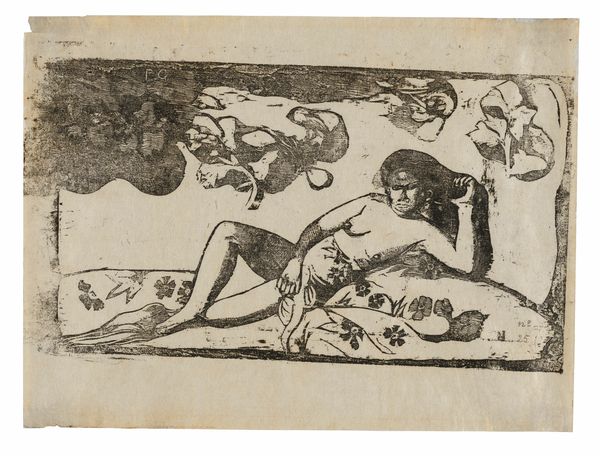
aquatint, print, etching, engraving
#
aquatint
# print
#
etching
#
figuration
#
symbolism
#
history-painting
#
charcoal
#
engraving
Dimensions: 93 mm (height) x 110 mm (width) (plademaal)
Curator: Here we have Oluf Hartmann’s “To kvinder slås om en mand,” or “Two Women Fighting Over a Man,” an aquatint, etching, and engraving work from 1907. Editor: It’s immediately striking – quite chaotic and charged with a disturbing energy despite the limited tonal range. The figures seem caught in a whirlwind. Curator: The composition certainly contributes to that effect. Note how Hartmann uses layering and contrasting densities of line to create depth and to focus the viewer’s eye. We move from the lighter background to the entangled forms in the foreground. Editor: Exactly, the contrast between the almost spectral man and the women clawing at him highlights how social conflict often victimizes masculine identity even while centering it. Who wins, who loses? I question the symbolic weight placed on this man who passively experiences their struggle. Curator: It’s true that his passivity is key. Hartmann utilizes classic symbolist strategies: the simplification of form, the use of stark contrasts, to explore this complex psychological drama playing out. Consider the formal qualities – the swirling lines evoke a sense of unease, but also focus the struggle in a clear area. Editor: While technically brilliant, the symbolic reading feels steeped in early 20th-century patriarchal anxiety. The woman in the back seems almost feral. I wonder how we might read this through a contemporary lens, perhaps engaging with theories about the male gaze or feminist readings of art history that challenge those very assumptions. Curator: Engaging with contemporary interpretations enriches our understanding and challenges traditional readings that can blind us to broader social dynamics. Viewing the piece through different prisms does broaden the art experience, making this older work eternally relevant. Editor: It also underscores how an artwork, rooted in a particular time, continues to spark new questions and shape discussions, even challenging and perhaps transforming them.
Comments
No comments
Be the first to comment and join the conversation on the ultimate creative platform.

